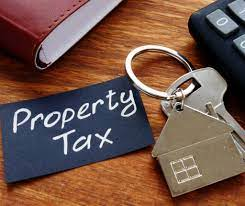Now Reading: 6 Crucial Implications From Vacant Property Tax Expansion in 2025
-
01
6 Crucial Implications From Vacant Property Tax Expansion in 2025
6 Crucial Implications From Vacant Property Tax Expansion in 2025

Table of Contents
Vacant Property Tax: Saudi Arabia’s real estate market, valued at SAR 1.1 trillion ($293 billion) with 200,000 transactions in 2024, is projected to reach USD 471 billion by 2030, growing at a 7.89% CAGR, per Saudi Residential Real Estate Market Overview.
Amendments to the White Land Tax (WLT) Law, ratified on April 29, 2025, per Royal Decree, raise the tax on undeveloped land from 2.5% to 10% annually and introduce a 5% tax on long-vacant properties, per ZATCA. These changes, aligning with Vision 2030, aim to curb speculation and boost housing supply. This article explores six crucial implications of the vacant property tax expansion for Saudi Arabia’s real estate market in 2025, with U.S. tax considerations, without external links.
Why Vacant Property Tax Expansion Matters?

Saudi Arabia’s 4.5% GDP growth forecast, 7.6 million population, and 20% FDI growth to SAR 15 billion ($4 billion) in 2024 drive real estate demand, per Ministry of Investment. The expanded WLT, targeting plots over 5,000 sqm and vacant buildings, reduces holding costs by 0.5–1% while supporting 6–8% yields. Key impacts:
- Supply Increase: 10–15% rise in developed plots.
- Compliance Efficiency: 98% adherence; fines up to SAR 500,000 avoided.
- Yield Stability: 85–90% occupancy in Riyadh’s Qiddiya.
- FDI Appeal: 15% growth in urban investments.
6 Crucial Implications of Vacant Property Tax Expansion in 2025
1. Accelerated Development in Riyadh
The 10% WLT on undeveloped land in Riyadh pushes developers to build, per ZATCA. A SAR 50 million plot incurs SAR 5 million annually, incentivizing a SAR 100 million SEDRA project, boosting supply by 5–10% and stabilizing 6–7% yields.
- Impact: Adds 20,000 units; supports 85% occupancy.
- U.S. Consideration: Income on Schedule E; assets on Form 8938.
- Action: Partner with ROSHN; verify via Wafi.
2. Reduced Speculation in Jeddah
The 5% vacant property tax on unused buildings in Jeddah discourages hoarding, per ZATCA. A SAR 30 million Marafy property faces SAR 1.5 million annually, encouraging sales or rentals, cutting speculation by 8% and supporting 7–8% yields.
- Impact: Increases market liquidity by 0.5–1%; aligns with 200,000 transactions.
- U.S. Consideration: Gains on Form 8949; accounts on FinCEN Form 114.
- Action: List via Ejar; consult Knight Frank.
3. Enhanced Housing Affordability in Dammam
Higher WLT drives developers to release affordable units in Dammam, per REGA. A SAR 20 million plot taxed at SAR 2 million annually prompts a SAR 40 million project, reducing prices by 5–7% and boosting first-time buyer demand by 10%.
- Impact: Supports Vision 2030’s 70% ownership goal; stabilizes 6–8% yields.
- U.S. Consideration: Income on Schedule E; credits on Form 1116.
- Action: Target PIF-backed projects; file with ZATCA.
4. Increased FDI in NEOM

The tax expansion signals regulatory clarity, attracting 15% more FDI to NEOM, per Ministry of Investment. A SAR 100 million undeveloped plot faces SAR 10 million WLT, encouraging SAR 200 million developments, enhancing 6–7% yields.
- Impact: Boosts FDI by 0.5–1%; supports 8% market growth.
- U.S. Consideration: Expenses on Schedule E; depreciation on Form 4562.
- Action: Invest via Tadawul; consult PwC.
5. Streamlined Compliance in Diriyah Gate
WLT regulations, issued within 90 days, simplify compliance for Diriyah Gate projects, per ZATCA. A SAR 40 million plot avoids SAR 200,000 penalties via Wafi registration, saving 0.5% in costs and aligning with 85% occupancy.
- Impact: Cuts audit costs by 0.3–0.5%; supports 6–8% yields.
- U.S. Consideration: Losses on Schedule E; report on Form 8938.
- Action: Use Istitlaa; verify with REGA.
6. Urban Land Optimization in Makkah
The 10% WLT and 5% vacant property tax optimize land use in Makkah, per ZATCA. A SAR 25 million plot or building taxed at SAR 2.5 million or SAR 1.25 million annually drives SAR 50 million developments, increasing supply by 5–10%.
- Impact: Enhances urban density; supports 7–8% yields.
- U.S. Consideration: Income on Schedule E; assets on Form 8938.
- Action: Align with MoCI; consult Deloitte.
Key Considerations for U.S. Investors
- Risks:
- Oversupply: 80,000 units in 2025 may soften yields by 0.5–1%, per CBRE.
- Volatility: 5–8% price fluctuations possible, per Knight Frank.
- Compliance Costs: Advisory fees add 0.3–0.5%, offset by savings.
- Tax Compliance: Saudi’s 2.5% zakat (Hijri), 5% RETT, 5% VAT, and 10% WLT apply. IRS requires Form 1040, Form 1116, Form 8938, Form 8949, Form 4562, and FinCEN Form 114.
- Regulatory Compliance: REGA mandates Wafi registration; fines up to SAR 500,000. Verify via MoCI.
- Currency Stability: SAR pegged at 1 USD = 3.75 minimizes risk.
Conclusion
The 2025 vacant property tax expansion in Saudi Arabia—accelerating development, reducing speculation, enhancing affordability, attracting FDI, streamlining compliance, and optimizing urban land—transforms a $293 billion real estate market with 6–8% yields. U.S. investors, leveraging IRS credits and tools from ZATCA, Wafi, or Ejar, can capitalize on opportunities in Riyadh, Jeddah, and NEOM, ensuring compliance and robust returns in Vision 2030’s dynamic landscape.
read more: 5 Smart Changes to Zakat Rules for Off-Plan Projects in 2025






















